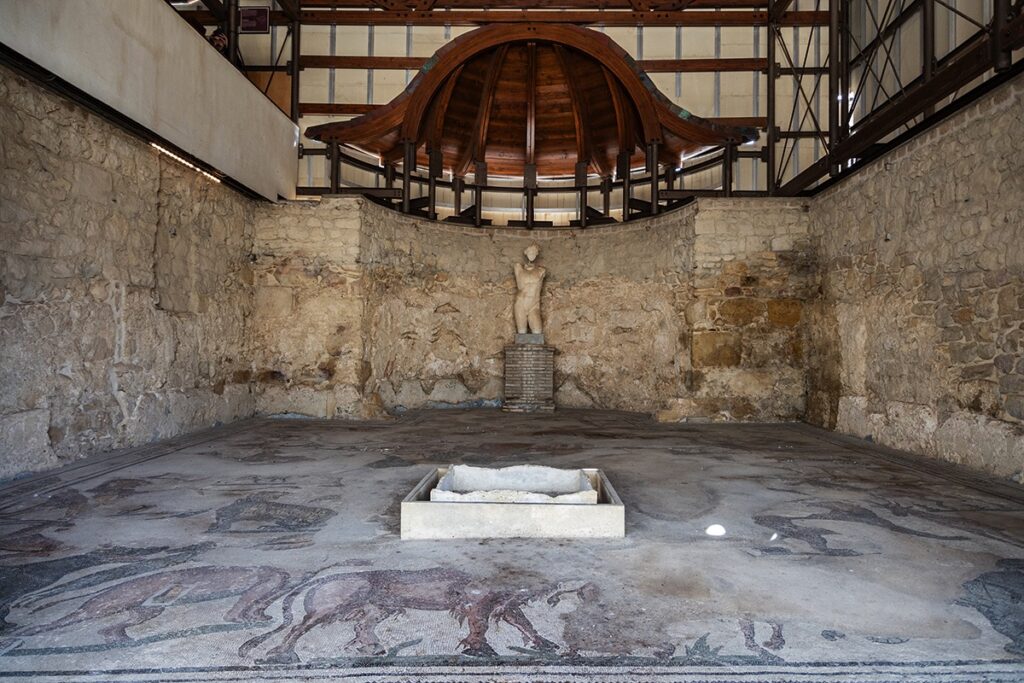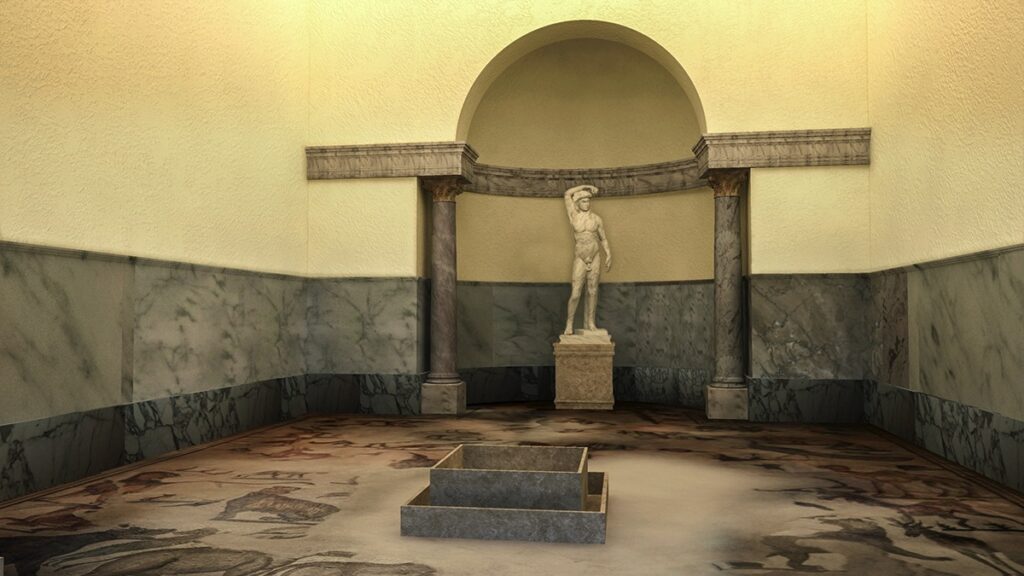The depiction of
Orpheus
often features in the mosaic decorations of the ancient Mediterranean, underlining the divine function of the Thracian poet.
Compared to other rooms, this almost square room was used, according to some scholars, for summer banquets or receiving guests, or even listening to music. It has elements that distinguish it from other spaces in the late antiquity domus. The location on a raised floor above that of the portico, the pair of columns with grey marble shafts and
Corinthian capitals
The location on a raised floor above that of the portico, the pair of columns with grey marble shafts and
Corinthian capitals
and the marble slabs with which the walls were covered, emphasise the receiving role that this room must have had, inserted within the villa’s public route.
 Further decorative elements include the presence of a partly reconstructed quadrangular fountain and an apse that held a statue that can be traced back to the typology of a
Lycean Apollo
Further decorative elements include the presence of a partly reconstructed quadrangular fountain and an apse that held a statue that can be traced back to the typology of a
Lycean Apollo
, which resurfaced during the excavations.